#history of eid Al Fitr
Explore tagged Tumblr posts
Text
Happy " Eid Al fitr" (Muslims celebrate breakfast after fasting the holy month of Ramadan) and "Sham al Naseem festival" ( an ancient Egyptian celebration of harvest ).

Kahk (coptic word) is round to represent the round desk of the sun ☀ the symbol of the ancient Egyptian god "Raa"
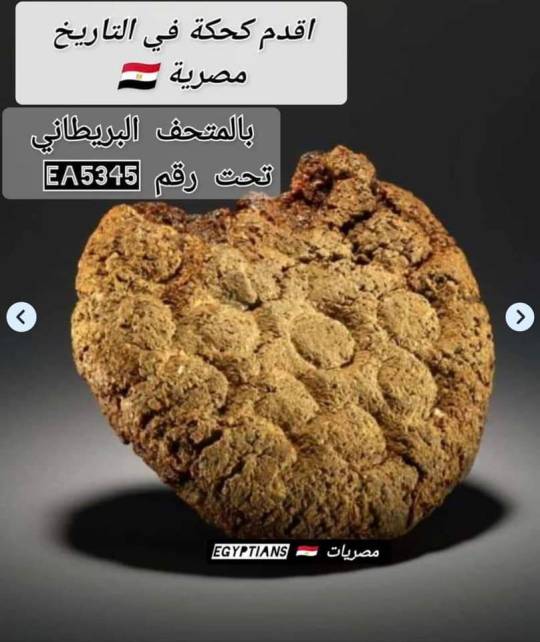
The eid cookies (kahk) is the oldest cookie in the world (British museum)
(we still make them today! The filled ones (kahk) in Eid. And the hollow ones (bracelet cookies) in funerals

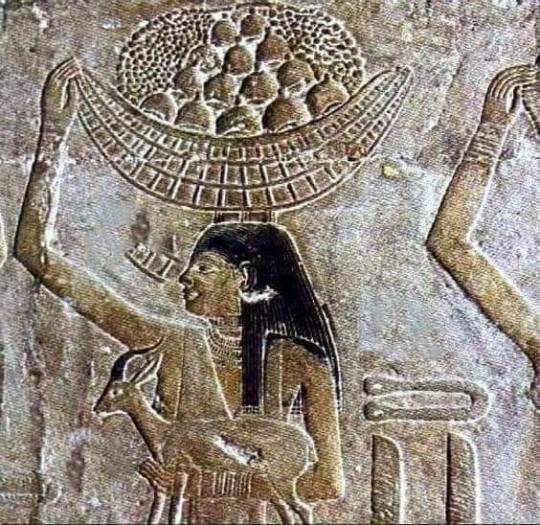
Our ancestors bringing kahk as symbolic sacrifice to Raa
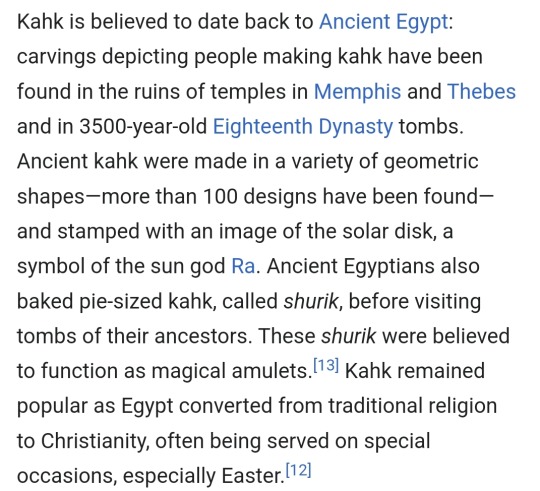
Speaking of Easter.. Did you know that Sham al Naseem is the og Easter?
But in Egypt we postpone it so that Christians can eat fish (after fasting themselves) 🥰

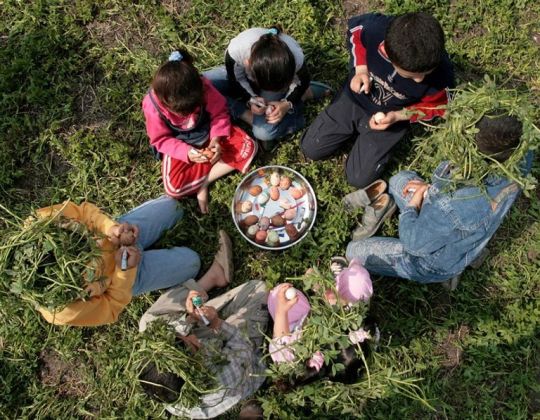


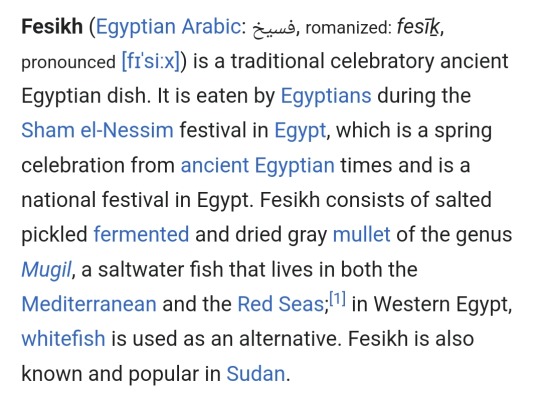
I can talk about our traditions and civilization all day long but nothing is compared to experiencing Egypt yourself. So don't be a stranger to the mother of the world 🥰❤️🇪🇬
#egypt#eid mubarak#eid al fitr#Sham al Naseem#ancient egypt#folclore#culture#civilization#no one can erase our traditions#not colonization#not arabization#we are the descendants#Kahk#Proud of my heritage#Proud of my religion#part of me#festival#fesikh#easter#easter eggs#green onions#food#cultural food#egyptian#history#muslims#christians#orthodox christianity#coptic#religious harmony
7 notes
·
View notes
Text

Hey Creative People! This is my new client's work, Do you need a minimal abstract Logo concept for your brand/website?
👉 Get your brand/website logo with 20% OFF! 🔥 Fiverr: https://lnkd.in/gPQ_BkMC SEOclerks: https://bit.ly/3L2MeJl Freelancer: https://lnkd.in/gfCcSHCa My portfolio: https://lnkd.in/gqb2zXTd
⤵ Contact for a new project! 📧 Email: [email protected] 📞 Phone: +880 18128 51553! 📱 Telegram: @abdulhasib5429
#business logo#logo design#graphic design#top surgery#news#todayquotes#today in hip hop history#today on tumblr#logo creation#minimalist logo#professional logo design#marketing#seo marketing#discover#unique logo#unique tattoos#bitcoin#seocourseindelhi#earnings#eid al fitr#eid dresses#logos#3d logo#free spirit#free mockup#mockingbird#mockup#ui ux design
11 notes
·
View notes
Text
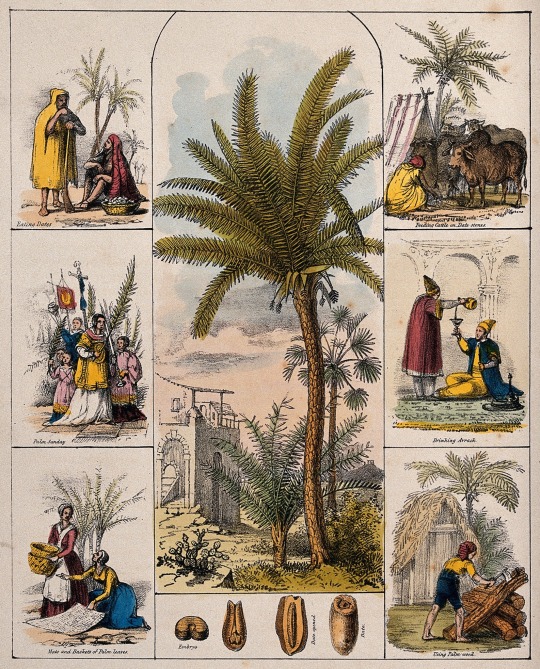
“Narrated Anas bin Malik:
Allah's Messenger (ﷺ) never proceeded (for the prayer) on the Day of `Id-ul-Fitr unless he had eaten some dates. Anas also narrated: The Prophet (ﷺ) used to eat odd number of dates.”
-Sahih al-Bukhari 953.
#books#history#literature#religion#theology#mysticism#esotericism#religious#orthodox#islam#sunnah#sunni#shia#sunni muslim#muslim#Shia Muslim#eid al fitr#eid#eid mubarak
1 note
·
View note
Note
Would I be somewhat correct to say that, loosely, iirc, Sunni Islam is like Protestantism in its strict, “exclusive” monotheism (no saints, no extra devotions to Muhammad or asking others to pray for you, no holy sites for other individuals), and no hierarchy, whereas Shia is more like Catholicism - a hierarchy in the leadership of the divinely set 12 Imams, praying to saints, relics etc., going to holy pilgrimage sites and wells etc., also ritual mortification in memory of Husayn (like wearing cilices or hairshirts in Catholicism). I’ve encountered some Sunnis who also dismiss it all as crazy and not in the Qur’an, as “extra,” added on—similar to how Protestants say about us with praying to saints, sacramentals etc etc
Ah, I think that while the Sunni=Protestant / Shi'a=Catholic analogy can kind of work so long as it's understood not to be a one-to-one analogy and that it falls apart the second any nuance is applied to it, I still think it only applies to some of what you said and not to others.
Sunnism definitely does not have a hierarchy the same way that Shi'ism does, and Sunnis definitely don't believe that devotion to the 'Ahl al-Bayt (the family of Muhammad) is an essential duty in the way that Shi'is do, but there is significant overlap between most Sunnis and Shi'is in terms of the other things you mentioned.
Muslims of all kinds have a long history of relic- and saint-veneration, from (Sunni) Mehmed the Conqueror who supposedly had a tooth of Muhammad to Hazratbal, considered one of the holiest (pan-Muslim) shrines in India because it houses a hair from Muhammad's beard. There are also lots of stories about Muslim saints appearing to others in visions to initiate them into esoteric rites (Sufism, primarily a Sunni phenomenon), and many tombs of great scholars or mystics have had mosques built on top of them, often with their own traditional pilgrimage rites to go with them. Salim Chishti, for example, is a Sunni saint of the Chishtiyya order whose tomb is often visited by women seeking to become pregnant; they ask for his intercession by tying a little red ribbon around the fences of the shrine.
In the West, however, there are large strands of Islamic thought influenced by Muhammad al-Wahhab, himself deeply influenced by Ibn Taymiyyah; they both believed that much of what was then mainstream in Islam wasn't authentically Islamic, and so sought to combat religious innovation (bid'a in Arabic) by removing anything they believed could not be traced back to the Muslim community as it existed when Muhammad was still in living memory. While proponents of an Islam that does not have saints, does not engage in pilgrimages beside the Hajj and the Umrah, and does not have holidays besides Eid al-Fitr and Eid al-Adha are vocal, they are not the only Sunnism in existence.
#Islam#asks#Sunnism#Shi'ism#pilgrimage#Sufism#Muhammad#Ibn Taymiyyah#Chishtiyya#relic#Wahhabism#Ahl al Bayt#Husayn
15 notes
·
View notes
Text
The invasion of Palestine is heartbreaking alone, but you know what is more blood boiling? The fact media downplay the truth and spread lies.
Let me explain the conflict in simple terms.
You lived in your house that was owned by your grandparents and great grandparents and ancestors. Then you welcome a family that seeks refuge. Then, slowly, that family takes over your house, killing YOUR FAMILY and then kicks you out. You break a window from YOUR HOUSE to come back in, then the family somehow convinces the media and everyone that you’re a terrorist because you fought back.
We’re you supposed to just let them unfairly take over everything and kill everyone without a fight?
This is not a fair fight, it is not a war.
This is a crime against humanity.

For 70 years counting, Israelis have been murdering Palestinians, men, women, children, elderly.
They sent an airstrike ON EID AL FITR.
Which was RECENTLY, FOR YOUR INFORMATION.
Media downplayed that. No one batted an eye. No one called for justice.
They continuously poison the only source of water in gaza.
Do not convince me, that a military force that is funded BILLIONS by the US and Britain since 1947, who commits war crimes against humanity itself, is a victim.

This was only ONE WEEK AGO.
But no one’s counting since 70 years ago.
Palestine has no access to clean non-poisoned water or food or even a roof. I thank allah that they still have the will to take back what’s rightfully theirs.
Israel controls the water, the food, the weapons, and the environment of Palestinian people.
This is an open air prison.
It’s a repeat of history. A repeat of the holocaust but to Palestinians.
8 notes
·
View notes
Text
Interesting Facts about Ramadan
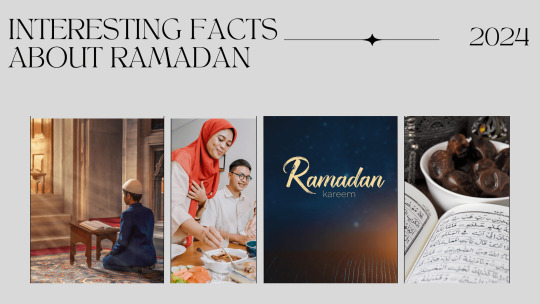
When Muslims see the crescent moon at the end of Sha’ban, they are happy and full of hope. This means that Ramadan has begun. A lot of people around the world fast in this time because it is a holy month. A fast isn't the only thing you can do during this time. You can also grow in your faith, your community, and your own thoughts. During Ramadan, many Muslims travel to Mecca to explore an amazing spiritual environment by booking the Best Ramadan Umrah Packages. There is a lot of interesting information about Ramadan that isn't clear, like not eating or drinking. This information helps to paint a more complete picture.
1. Fasting Is More Than Just Not Eating:That people who fast from dawn until dusk, which is known as Suhoor-Iftar- are said to become more spiritual and self-controlled. A great many people think that fasting in Ramadan means not having any food or drinks. You should think about more than just this, though. Muslims don't do lie, get angry, or get antsy when they fast.
2. Traditions of Suhoor and Iftar: Muslims eat a big breakfast with water, protein, and complex carbs before dawn. Suhoor, the meal eaten before morning, is important for staying alive during the day. Every evening, to break the fast, a big meal called iftar is given to everyone. The Sunnah, or customs, of the Prophet (PBUH) say that dates and water must be followed by a more sincere dinner. People from the same family or community often get together for iftar to strengthen their spiritual bonds. 3. Kindness and generosity:
Ramadan emphasizes kindness and giving to others. Muslims help others by giving money, doing volunteer work, and doing kind things. Muslims believe that giving to the needy to make them more responsible and compassionate individuals. Zakat, the Islamic charity, has a major celebration this month. Zakat is among Islam's five pillars.
4. Thoughts and Spiritual Renewal: Muslims improve their ties with Allah, pray more (Tarawih), and ask for forgiveness for past wrongdoings during this month. During Ramadan, people fast, but they also meditate and get spiritually refreshed. People focus on spiritual growth and understanding all year, not just during the month of Ramadan. It shows in their thoughts and actions. 5. Peace and unity around the world: All Muslims are urged to stay united and give each other a helping hand throughout Ramadan. No matter where they reside or what culture they hail from, Muslims worldwide fast, pray, and think collectively. Everywhere in the world, Ramadan supports the idea of a global Ummah (community). It also helps people of all races and countries get to know each other better and work together.
6. Celebration of Eid al-Fitr:
There is a holiday called Eid al-Fitr at the end of the holy month of Ramadan where people break their fast. Muslims pray, have fun, and share food when they get together. Seasonal blessings include giving thanks, mending fences, and letting go of grudges. As a family, you share prayers and presents with one another. Muslims are expected to pay a kind of charity known as zakat al-Fitr. It aids the poor and needy and expedites forgiveness for any wrong action or speech. Summary Muslims fast for one whole month during Ramadan. This is just the beginning of a hard but ultimately fruitful path of spiritual growth. History, custom, kindness, and personal growth are some of the things that are talked about. For a better understanding of the main ideas of kindness, self-control, and unity, reading about the interesting part of the Islamic holy month of Ramadan can help. During this blessed month, Muslims all over the world get together to pray, do good deeds in the community, and think about their faith.
Moreover, the last 10 days of Ramadan is very important for every Muslim worldwide. During these days, millions of Muslims visit Mecca to complete their religious duties. The holy sites of Mecca and Medina are very crowded due to this large crowd. This huge crowd and other things can irritate you if you travel to Mecca for the first time. If you perform your entire pilgrimage without any hassle, book your Umrah travel from a reliable Umrah Travel Agent. This consideration will enable you to complete your religious trip with ease.
2 notes
·
View notes
Text
Discovering Cape Town: Top Attractions You Can't Miss
Welcome to the vibrant city of Cape Town, a destination that is sure to captivate and enchant you with its breathtaking beauty and rich cultural heritage.
In this article, we will take you on an exciting journey through some of the top attractions that simply cannot be missed during your visit to this magnificent South African gem.
From the towering Table Mountain offering spellbinding panoramic views to the iconic and colorful Bo-Kaap neighborhood immersed in history, Cape Town has something for everyone.
So pack your bags and prepare yourself for an unforgettable adventure as we unveil the hidden treasures awaiting discovery in this incredible city.
Table Mountain: A Majestic Peak Offering Breathtaking Views
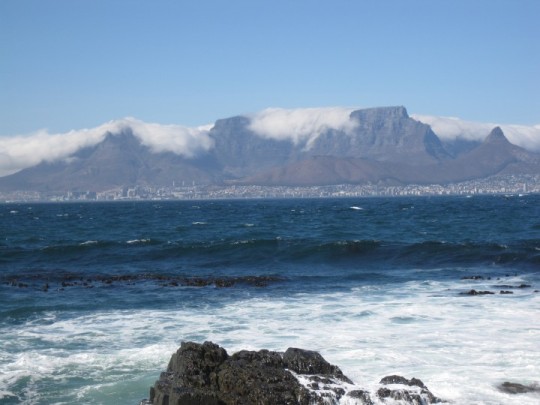
Table Mountain, one of Cape Town's most iconic attractions, is a majestic peak that offers visitors breathtaking views of the city and the surrounding coastline. With its distinctive flat-topped shape, this natural wonder stands proudly at over 3,500 feet above sea level.
Spectacular Cable Car Ride
The most popular way to reach the summit of Table Mountain is by cable car. This thrilling ride provides a unique perspective as it slowly rotates, allowing passengers to enjoy 360-degree views while ascending to the top. The cable car operates during daylight hours and can accommodate up to 65 people per trip.
Various hiking trails
For those seeking an active adventure, Table Mountain also offers various hiking trails that cater to all fitness levels. From leisurely strolls to challenging climbs, these trails provide an opportunity to immerse yourself in the natural beauty of the mountain while enjoying panoramic vistas along the way.
Visiting Table Mountain is a must-do for anyone exploring Cape Town. Whether you choose to take in the stunning scenery from above with a cable car ride or challenge yourself with a hike to the summit, this majestic peak promises unforgettable experiences and awe-inspiring views that will leave you breathless.
Exploring the rich history and vibrant culture of Bo-Kaap

Bo-Kaap, located on the slopes of Signal Hill in Cape Town, is a neighborhood bursting with history and culture. The area's colorful houses, known as "Cape Malay" or "Bo-Kaap style," are a vibrant testament to its rich heritage. Bo-Kaap, which was formerly home to slaves from Malaysia, Indonesia, and other African nations during colonial times, has come to represent resiliency and community.
A Window into South Africa's Past
When visiting Bo-Kaap, take a walk down the cobblestone streets to admire its picturesque architecture. Each house tells a story unique to this multicultural area. You'll also find museums that highlight the neighborhood's historical importance and shed light on apartheid-era struggles. Immerse yourself in local traditions by sampling authentic Cape Malay cuisine at one of many restaurants offering distinctive flavors influenced by centuries-old recipes.
Discovering cultural festivals
One cannot miss experiencing the vibrant festivals celebrated in Bo-Kaap throughout the year. The annual Cape Town Minstrel Carnival Parade is especially exciting as it showcases traditional music performances accompanied by dazzling costumes. Another cherished event is Eid al-Fitr, marking the end of Ramadan for Muslim residents here, who make up much of Bo-Kaap's population today. Attending these festivities allows visitors to witness firsthand how cultural practices have been preserved over generations in this welcoming community.
Unwind and relax at the stunning beaches of Cape Town.
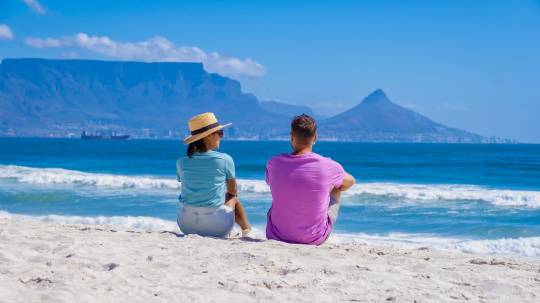
With its pristine coastline, Cape Town offers some of the most breathtaking beaches in the world. Nestled between dramatic mountains and crystal-clear waters, these sandy shores are perfect for sunbathing or taking a refreshing dip.
Clifton Beach: Known for its four luxurious coves, Clifton Beach attracts locals and tourists alike. Enjoy panoramic views while lounging on soft sand or take a leisurely walk along the picturesque promenade.
Boulders Beach is famous for its adorable residents—African penguins! Boulders Beach is an absolute must-visit. Watch as these delightful creatures waddle around their natural habitat, adding charm to an already stunning beach setting.
Muizenberg Beach: A surfer's paradise, Muizenberg boasts gentle waves that make it ideal for beginners. Take surf lessons or simply soak up the vibrant atmosphere from one of the colorful Victorian bathing boxes lining the beach.
Whether you're seeking tranquility under palm trees or craving adventure on crashing waves, Cape Town's diverse range of beaches has something to offer everyone.
Delve into the fascinating world of Cape Town's winelands.

When visiting Cape Town, taking a trip to the beautiful winelands is an absolute must. With breathtaking landscapes and world-class vineyards, this region offers a fascinating glimpse into South Africa's wine heritage. Explore Stellenbosch, Franschhoek, or Paarl and indulge in exquisite wine tastings at award-winning estates.
In Stellenbosch, you'll find charming oak-lined streets that lead you to some of the oldest wineries in South Africa. Take a leisurely stroll along Dorp Street and visit historic cellars where skilled winemakers will guide you through each tasting. Don't miss out on experiencing the renowned "Pinotage" varietal, a uniquely South African red wine.
Head over to Franschhoek for its stunning scenery coupled with exceptional culinary experiences. This picturesque town boasts world-class restaurants nestled among lush vineyards. Pay a visit to Haute Cabrière or La Motte Estate for delectable food pairings with their finest wines—a true feast for your taste buds!
Lastly, explore Paarl, which showcases magnificent mountain views combined with incredible terroir found nowhere else on earth. Vineyard-fringed valleys await your arrival as you sample superb wines such as Chenin Blanc or Shiraz varieties from esteemed labels like Fairview or Anura.
Indulging in Cape Town's Winelands is an idyllic way to absorb the city's rich culture while savoring its delicious offerings.
Discover the wildlife and natural beauty of the Cape Peninsula.
Explore the Cape Peninsula's wildlife and natural beauty.
The Cape Peninsula is a haven for wildlife enthusiasts and nature lovers alike. The region boasts diverse ecosystems, from pristine beaches to lush mountain ranges.
Encounter Penguins at Boulders Beach

Boulders Beach is home to a colony of African penguins, where visitors can experience an up-close encounter with these fascinating creatures. Take a leisurely stroll along the boardwalks and watch as the penguins waddle on the sandy shores or swim gracefully in the crystal-clear waters.
Discover the Fynbos Kingdom in Table Mountain National Park.
Table Mountain National Park offers breathtaking views from its summit and a chance to explore one of the world's richest floral kingdoms. The fynbos vegetation found here is both unique and incredibly diverse, with over 1,470 species that are found nowhere else on earth.
Spot whales at False Bay
False Bay provides excellent whale-watching opportunities during their annual migration path between June and November. Be mesmerized as you witness these magnificent marine mammals breach and frolic in the bay's turquoise waters.
Immerse yourself in nature's wonders as you discover Cape Town's extraordinary wildlife and natural beauty—an experience not to be missed!
Immerse yourself in the vibrant energy of Cape Town's City Center.
Experience the vibrancy of Cape Town's City Center.
Explore the pulse and excitement of Cape Town's city center, where rich history meets bustling modernity. Lose yourself in the vibrant streets lined with colorful buildings, trendy cafes, and boutique shops. Indulge your senses as you take in the mixture of aromas wafting from local food stalls and restaurants.
Iconic Landmarks at Your Fingertips
Within the city center, you will find iconic landmarks that are not to be missed. Take a leisurely stroll along Long Street, known for its lively atmosphere and eclectic mix of bars and clubs. Marvel at the architectural beauty of Cape Town City Hall or visit Greenmarket Square to immerse yourself in local culture through its vibrant market stalls.
Immerse yourself in history and art.
Step back in time by visiting one of Cape Town's many museums located in or near the city center. Get a glimpse into South Africa's turbulent past at the District Six Museum or explore contemporary African art at the Zeitz Museum of Contemporary Art Africa (MOCAA). These cultural institutions provide intriguing insights into Cape Town's diverse heritage.
By immersing yourself in Cape Town's city center, you will uncover a vibrant energy that is unmatched anywhere else. Whether it is experiencing bustling street life or discovering historical landmarks, there is something for everyone in this captivating part of town.
Unforgettable Experiences at the Cape of Good Hope Nature Reserve

Breathtaking Scenery:
The Cape of Good Hope Nature Reserve offers stunning landscapes that will leave you in awe. With its rugged cliffs, rolling green hills, and pristine beaches, the reserve provides a feast for the eyes. Take a leisurely hike along one of the many scenic trails, or simply relax on one of its secluded stretches of sand.
Unique Wildlife Encounters:
Prepare to be amazed by the diverse array of animal species that call this nature reserve home. Keep your eyes peeled for African penguins waddling along rocky shores or graceful ostriches strutting their stuff. If luck is on your side, you might even catch a glimpse of elegant baboons swinging through trees or majestic whales breaching offshore.
Lighthouse Adventures:
Make sure to visit the historic lighthouses located within the reserve grounds. The iconic Cape Point Lighthouse not only offers panoramic views but also transports visitors back in time with fascinating tales of shipwrecks and maritime history. For an even more adventurous experience, climb up to its viewpoint and marvel at sweeping vistas stretching as far as the eye can see.
Soak in the art and creativity of Cape Town's cultural scene.
From the vibrant street art to the world-class galleries, Cape Town is a haven for art lovers. Explore the colorful neighborhoods of Woodstock and Bo-Kaap, where you'll find walls adorned with captivating murals that tell powerful stories about South Africa's past and present.
Immerse yourself in African contemporary art at the Zeitz Museum of Contemporary Art Africa (MOCAA). Housed in a converted grain silo, this architectural marvel showcases cutting-edge artworks from across the continent. Marvel at thought-provoking sculptures, paintings, and installations that reflect diverse cultural perspectives.
For a taste of local creativity, visit the Old Biscuit Mill in Woodstock. This trendy market hosts a vibrant mix of food stalls, boutiques, and design studios. Wander through its bustling lanes as you discover unique handmade crafts and stylish fashion pieces crafted by local artisans.
Whether you're strolling through outdoor galleries or admiring masterpieces indoors, Cape Town's cultural scene offers something for every art enthusiast. Immerse yourself in its rich tapestry of creativity and let your imagination soar.
#western cape#cape town attractions#museums#natural history#south africa#top attractions cape town#popular attractions
3 notes
·
View notes
Text
LET'S TALK ABOUT THE HISTORY AND HOW ISRAEL AND PALESTINE WAR BEGIN
—The Israeli-Palestinian dispute is one of the most complex and insistent tensions in today’s world order. The’ war’ between the government residents of Israel and the Palestinian Stateless people is now part of an extremely violent and warped environment. The Israelis-Palestinian relationship is profoundly complex and therefore without a simple explanation or solution. The lack of a single answer has made it difficult for others to grasp the disagreement. Anybody who tries to analyze the problem typically does too many inquiries and not enough responses. This paper aims at defining the main characteristics of the dispute. Throughout the explanation of how Jewish-Arab connections have been changed and influenced by the circumstances throughout Israel and Palestine, the paper takes into account the historical and contemporary dimensions of conflict.
•History of Israel and Palestine conflict
—the war between israel and palestine—
which started in the early 20th century, is the current dispute between Israelis and the Palestinian people. There is a large rivalry between Zionist Jishuv and the Arabs, who are now residing in Palestine below the Ottoman rule, and then British rule, in relation to the early stages of the same dispute. This comes as part of the larger rivalry between Arab and Israel. The main questions remain mutual recognition, security, protection, water rule, Jerusalem command, Israeli settlements, independence of the Palestinian community, and resolution of the refugee problem.
THE "CONFLICT" BETWEEN ISRAEL AND PALESTINE
In mid-May, violence between Gaza and Israel intensified to levels not seen for years, with Hamas shooting hundreds of rockets toward the Tel Aviv area and Israel retaliating with heavy strikes in the Gaza Strip. On May 20, Israel and Hamas agreed to a cease-fire, but during the 11 days of fighting, at least 243 people were killed in Gaza, including 66 children, and 12 people were killed in Israel, including two children.
The buildup to the latest conflagration—some have already called it a new intifada, Arabic for “uprising”—began in a Jerusalem neighborhood near the Old City, close to the Al-Aqsa Mosque, one of Islam’s holiest sites for more than 1,200 years. On May 10, the Israeli police raided the mosque, firing rubber-coated bullets and stun grenades at Palestinians who had been fighting with them the previous night. While Muslims pray at Al-Aqsa year-round, the mosque attracts even more worshipers during Ramadan. May 12 marked the end of Ramadan and the start of Eid al-Fitr, a joyous time at the conclusion of the monthlong fast.
There’s no doubt that the most extreme Jewish nationalists would like Israel to recapture the Al-Aqsa Mosque. They say it sits on top of the ruins of the ancient Jewish Temple, the only remainder of which is the Western Wall. But aside from the setting, faith is only tangentially related to the violence.

THE BORDER OF ISRAEL AND PALESTINE
—The land which would become Israel was for centuries part of the Turkish-ruled Ottoman Empire. After World War One and the collapse of the empire, territory known as Palestine - the portion of which west of the River Jordan was also known as the land of Israel by Jews - was marked out and assigned to Britain to administer by the victorious allied powers (soon after endorsed by the League of Nations).
The terms of the mandate entrusted Britain with establishing in Palestine "a national home for the Jewish people", so long as doing so did not prejudice the civil and religious rights of non-Jewish communities there. The final status and contours of the West Bank, Gaza and East Jerusalem are meant to be decided in negotiations between Israel and the Palestinians living there under Israeli occupation, but decades of on-off talks have so far proved fruitless. The border around the Gaza Strip has grown into a semi-permanent structure with security fences and concrete walls set deep into the ground to prevent tunnelling - after Hamas militants launched a series of raids from tunnels into Israel in 2014. However, Hamas militants again breached the security barriers above ground in the biggest attack of its kind on 7 October, 2023.

"TERRITORY"
Israel’s continuing oppressive and discriminatory system of governing Palestinians in Israel and the Occupied Palestinian Territories (OPT) constituted a system of apartheid, and Israeli officials committed the crime of apartheid under international law. Israeli forces launched a three-day offensive on the occupied Gaza Strip in August during which they committed apparent war crimes. This compounded the impact of a 15-year ongoing Israeli blockade that amounts to illegal collective punishment and further fragments Palestinian territory. Israel escalated its crackdown on Palestinians’ freedom of association. It also imposed arbitrary restrictions on freedom of movement and closures that amounted to collective punishment, mainly in the northern West Bank, ostensibly in response to armed attacks by Palestinians on Israeli soldiers and settlers.
The year saw a rise in the number of Palestinians unlawfully killed and seriously injured by Israeli forces during raids in the West Bank. Administrative detentions of Palestinians hit a 14-year high, and torture and other ill-treatment continued. Israeli forces demolished al-Araqib village in the Negev Naqab for the 211th time. A further 35 Palestinian-Bedouin towns in Israel were still denied formal recognition and residents faced possible forcible transfer. Authorities failed to process asylum claims for thousands of asylum seekers, and imposed restrictions on their right to work.

RESOURCES
—The conflict in the Middle East has always had natural resources in its background: land, water and oil. Strategists have asserted that the struggle over water might be at the heart of the next round of the Arab-Israeli conflict, while the recent discovery of new natural gas fields has added "fuel to the fire." At the same time, pollution and the environment are clearly cross-border issues.
n this special issue of the PIJ, we aim to examine the topic from several aspects, including the legal, political and economic. What are the obligations of an occupying country regarding the preservation and protection of the rights of the occupied people to their own natural resources? To what extent is Israel abiding by international law and treaties, and to what extent is it violating these laws by exploiting the natural resources of the occupied territories? How could these resources be managed under occupation, and how could they be an issue of regional cooperation in a time of peace? How could we address cross-border issues, and how could we build a network of regional cooperation to protect the environment? What are the future prospects to develop, at a time of peace, the shared natural resources for the benefit and prosperity of all the peoples of the region?
The original working title for this issue was "The Natural Resource Challenge in the Middle East: Destructive Conflict or Political Settlement and Sustainable Cooperation." Our goal has been to create a basic resource tool which will serve as a handbook for all in the region and the international community who deal with these issues, as a potential building block for peace and regional cooperation. And of course, at the core of our concerns is the Israeli-Palestinian conflict and how it affects natural resources and the environment in the region.
The 15 articles in the Focus section, written by Palestinian, Israeli and international experts, and the interview with a former Palestinian minister of the environment, explore the sources of conflict that arise in the Middle East around natural resources. They raise questions about how to deal with those natural resources before, during and after concluding a political settlement to the Arab-Israeli conflict, and how to develop a process of cooperation and coordination between regional countries to use those resources as a foundation for political settlement and sustainability.

"THE ORIGIN OF THE PEOPLE"
The Jewish population is increasingly composed of persons born in Israel itself, although millions of immigrants have arrived since the founding of the State of Israel in 1948. The Arab population is descended from Arabs who lived in the area during the mandate period and, in most cases, for centuries before that time. Following a period of extreme violence before, during, and after the war particularly on the part of Zionist militias British forces withdrew from Palestine, and Israel declared its independence on May 14, 1948.

"THE NOVA MUSIC FESTIVAL"
The Tribe of Nova trance music festival, near Kibbutz Reim, was one of the first targets for Hamas militants as they launched their unprecedented attack on Israel in the early hours of Saturday morning, overrunning the concert area, shooting into the crowd and grabbing as many hostages as they could.
As partygoers ran for their lives, they were cut down. Israeli officials said at least 260 people were killed in the massacre, and others were taken captive to be held as hostages.
An estimated 1,000 Hamas militants also breached the security barrier at several positions. AP, Israel declares war, bombards Gaza and battles to dislodge Hamas fighters after surprise attack, 8 October 2023. Gaza has seven official border crossings, of which only three are operational

"I'm a pro Israel"
Israel has the obligation to protect its population from further attacks. However, the right of self-defence does not exist in isolation
On 7 October, armed Hamas and Palestinian Islamic Jihad (PIJ) fighters stormed the Gaza-Israel border fence, captured Israeli military posts, entered Israeli towns and kibbutzes in the border area, brutally killed hundreds of people and took more than 200 hostages to the Gaza Strip. Since then, Hamas and other militant groups have fired thousands of rockets from Gaza into Israel, killing people at random.
The day after the terrorist attack, Israel started its airstrike campaign on the Gaza Strip. Hamas, on the other hand, threatened to kill a hostage every time Israel bombed homes without warning. According to Israeli figures, at least 1,300 Israelis and foreign nationals were killed in total by Hamas and PIJ rocket fire and massacres. The Israeli Prime Minister Benjamin Netanyahu has declared a state of war. The aim of the military operation that now follows is to retaliate and to completely destroy Hamas’ military capabilities in Gaza.

2 notes
·
View notes
Text
Harry Potter: The Inclusive Version
With the recent news that JK Rowling is taking things a step further and using new funds from our nostalgia trip to fund Anti-Trans bills, I decided to say a giant fuck you to that and reclaim my childhood as my own. I have started writing out a new version of the Harry Potter Universe in more Modern day times and things we all wanted but JK Rowling deprived us of. This AU, New Age Harry Potter universe is for all writers, artists, and cosplayers to use who still want to be apart of the Harry Potter world we all love but feel they can't support JK Rowling's version anymore.
I give you all a new version to support and put your love into while still holding onto the nostalgia you feel for the Wizarding World. I give you Harry Potter: The Inclusive Version.
~_~_~_~_~_~_~_~_~_~_~_~_~_~_~
The School - Hogwarts School for Witchcraft and Wizardry is still a castle but has fewer death traps and tricky things that cause you to miss class (Like phantom steps or doorways that lead to walls cause who thought that was a good idea?). For those that still like to get up to mischief, don’t worry there are still plenty of secret corridors behind well-hidden buttons or levers or things that require a particular rhyme to open. The tunnels behind them lead all over, from different areas of the school to the Forbidden Forest, all the way to Hogsmeade. There are even rumors of one that disappears and reappears at the same time a specific room does.

The Teachers - They are many lovely teachers at Hogwarts though the Dark Arts teacher changed for a few years the one that stuck around was well-loved by all the students.
Core Classes
Astronomy - Professor Aurora Sinistra
Charms - Professor Filius Flitwick
Defense Against the Dark Arts (D.A.D.A.) - Quinirus Quirrel (First year only), Gilderoy Lockhart (Second year only), Remus Lupin (Third year-Present)
Herbology - Professor Pomona Sprout
History of Magic -Professor Cuthbert Binns
Potions - Professor Severus Snape
Transfiguration - Professor Minerva McGonagall
Electives
Arithmancy - Professor Septima Vector
Care of Magical Creatures - Professor Rubeus Hagrid
Divination - Professor Sybill Trelawney
Muggle Studies - Professor Charity Burbage
Study of Ancient Runes - Professor Bathsheda Babbling
Advanced Arithmancy Studies - Professor Septima Vector
Alchemy - Professor Carina Birch (I had to make one up because there isn’t one on the wiki)
Extra-Curricular Subjects
Ancient Studies - Professor Delta Grace (Another made up one)
Apparition - Professor Wilkie Twycross
Art - Professor Crow Sterling (Made up)
Flying - Professor Rolanda Hooch
Ghoul Studies - Professor Cedar Hinde (Made up)
Magical Theory - Professor Eleazar Fig
Muggle Art - Professor Charity Burbage
Muggle Music -Professor Charity Burbage
Music - Professor Basil Yetis (Made up)
Xylomancy - Professor Sybill Trelawney
How Different Holidays Work - There are a vast array of magical students attending Hogwarts and not all of them share the same religions or subsequent holiday traditions due to that fact, but the Hogwarts staff are very accepting and accommodating of all the students they care for and have ways of making sure they get to spend the holidays with their families accordingly.
3 days before Hanukkah in the given year any students who practice Judaism and wish to spend Hanukkah with their families will be given a sign-up sheet with the option to sign up to stay at school or leave their names off the list and be planned to be on the train ride to Platform 9 ¾ to meet their families. They will spend their 8 days with their families and then have two more nights to say goodbyes and goof off before getting on the train back to Hogwarts.
As for those who celebrate Eid al-Fitr and Eid al-Adha, the staff keeps track of when those holidays are coming and during Eid al-Fitr, they make sure the house elves who work the kitchens are aware of whose fasting so food isn’t sent their way and when it comes times for salat, there is an emptied out hall they keep just for Muslim students to pray in when they want or need to. 3 days before Eid al-Adha, teachers offer another signup sheet to either stay at school or students who wish to visit their families to celebrate with them and be with them during that time will be free to take the train back to Platform 9 ¾ to be with their families for a week. After the week ends, they will return back to school and continue their classes.
For those who celebrate Christmas, a signup sheet is passed around on December 21st to see who wants to stay at school, and those who do not sign up get to return home to their families for the holiday and spend Christmas Eve and Day through to New Years with their families and then the day after New Years return to Hogwarts to continue classes.
For those that celebrate Kwanzaa, another signup sheet goes around just after the Christmas kids have left on December 23rd, and those who decided to get to return home to spend Kwanzaa with their families before returning to school on January 3rd just after the Christmas kids get back as well to resume classes.
Magic Traditions - The Goblet of Fire was a tradition for a long time but luckily that stayed banned because it’s deadly and who would pin a bunch of school children in a fucking death match? But Quidditch is much less deadly, though still dangerous it’s still a beloved sport of the Wizarding World. Another beloved tradition that’s still around is the Sorting Ceremony but the school’s much less divided nowadays. The teachers have long since realized that if siblings who only know each other get put in different houses it may cause a very bad rift between them, especially for ones who are younger siblings. So they allow people to mingle between tables and as long as you have permission from a member belonging to the house, you’re allowed to be in another house's common room. They are however magical precautions against people giving away separate house passwords to each other or for anyone who doesn’t have a house's permission to sneak into another house's common room. Professor Flitwick is quite good with charms y’know?
The Potter Prophecy - Lily and James Potter died at the hands of Lord Voldemort and Lily dying to protect her child gave him the protection that lasted his whole life. But as for being left on the Dursley’s doorstep by a morally-grey man who wanted to raise that child for slaughter? Uh-uh, no, not in my good magical household. You see in this life there were better resources and better options. In other words, the person who caught up to Sirius Black wasn’t a goddamned moron and checked his wand to see what spell was cast last and saw that he in fact did not just blow up a man. On top of that Professor Albus Dumbledore decided to have a heart and tell them that Sirius Black wasn’t the Potters' secret keeper and that it was in fact, Pettigrew. Long story short, Sirius Black never went to Azkaban and since he was Harry’s Godfather he had first dibs on adopting Harry. So instead of being raised in the abusive Dursley house, Harry was raised by his two gay Uncles, Sirius and Remus, and grew up feeling loved and knowing who and what he was. Of course, the kid wasn’t raised to have an ego or be anything but polite yet sarcastic, much like Remus, but he knew from a certain age why people always stared at him and were always giddy to meet him.
New Age Wands - Wands aren’t what they used to be either. Ollivander was the first wandmaker to start pioneering a new way of making wands more concealable to muggles when people started finding ways to charm technology into working around and with magic. You see a guy pulling out a long spindly stick as a reflex when he gets angry kinda makes people start to question things a little when he acts like it’s a weapon of mass destruction and his cousin acts like that stick is a knife pointed at his throat. So mixing wands into things like umbrellas, and selfie sticks, heck they even sell wands that flip out like a switchblade or collapse into a handle like pens. Of course, finding the right type of wand is done the old-fashioned way of which wand chooses you, so you find the right wand in the normal form but if you want it to be concealable Ollivander has no problem making it that way for a little extra charge.
~_~_~_~_~_~_~_~_~_~
So there you have it. The first post to the new Harry Potter. I'll finish up the Character stuff I have and post it later. Also, I deeply apologize if any of the stuff about other holidays is off, particularly the Muslim holidays. I don't know about other holiday traditions beside Hanukkah really and as much as I tried to do the best research I could into the topics of the other holidays to get the information right there wasn't a lot of good info about how Eid is celebrated. Feel free to correct me and I will make changes to it. I appreciate any feedback.
7 notes
·
View notes
Text
Turkey Public Holidays 2023 | Turkey Holidays 2023
This article delves into the captivating world of Turkey public holidays, exploring their origins, cultural significance, and the diverse ways in which they are celebrated.
Turkey, a land where rich history and vibrant culture converge, boasts a diverse array of public holidays that reflect its heritage, traditions, and values. From religious observances to national commemorations, Turkey's public holidays play a significant role in the lives of its citizens.
Here you can checkout Turkey public holidays.
1. The Blend of Secular and Religious Observances
Turkey's public holidays offer a unique blend of both secular and religious observances. This is a testament to the country's rich history, which includes its transformation from the Byzantine and Ottoman empires to the modern Turkish republic. Public holidays in Turkey are divided into two main categories: secular holidays, which have a focus on national identity and history, and religious holidays, which hold immense significance for the country's Muslim population.
2. Religious Holidays: Celebrating Faith and Tradition
One of the most important religious holidays in Turkey is Eid al-Fitr, also known as Ramazan Bayramı. This three-day celebration marks the end of Ramadan, the Islamic holy month of fasting. Families come together to share festive meals, exchange gifts, and give to those in need, adhering to the principles of generosity and compassion.
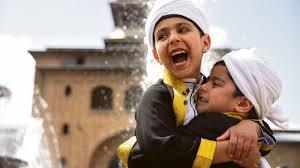
Another significant religious holiday is Eid al-Adha, or Kurban Bayramı. This holiday commemorates the willingness of Ibrahim (Abraham) to sacrifice his son as an act of obedience to God. Families sacrifice animals, and the meat is distributed to those in need, promoting solidarity and care for the less fortunate.
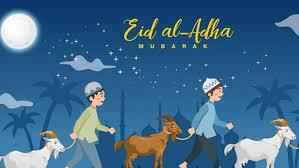
3. Secular Holidays: Honoring National Identity
Secular holidays in Turkey are deeply rooted in the country's history and its transition into a modern, progressive state. The most prominent secular holiday is Republic Day, celebrated on October 29th. This day marks the proclamation of the Turkish Republic in 1923 and the abolishment of the Ottoman Empire. Festivities include parades, fireworks, and cultural performances that showcase the nation's unity and strength.
Another notable secular holiday is Victory Day, commemorated on August 30th. This holiday pays tribute to the military victories during the Turkish War of Independence. The day is celebrated with ceremonies, exhibitions, and historical reenactments that honor the resilience and determination of the Turkish people.
4. Cultural Festivals: A Fusion of Tradition and Modernity
Turkey's public holidays also feature various cultural festivals that celebrate the country's diverse heritage. One such festival is Nevruz, a spring equinox celebration that holds roots in ancient Turkic traditions. It marks the arrival of spring and is celebrated with music, dance, and colorful displays.
The International Antalya Film Festival showcases Turkey's contribution to the world of cinema. This event attracts filmmakers and cinema enthusiasts from around the globe, providing a platform to appreciate Turkey's cinematic achievements.
5. Travel and Tourism During Public Holidays
Turkey's unique blend of history, culture, and natural beauty makes it a sought-after destination for travelers. Public holidays can significantly impact the tourism industry, as both locals and tourists participate in the festivities. Visitors can immerse themselves in the local customs, enjoy traditional cuisine, and witness the vibrant celebrations that unfold during these holidays.
6. The Economic Impact of Public Holidays
Public holidays play a significant role in Turkey's economy. Businesses often adjust their operations during holidays, and industries like tourism, hospitality, and retail experience fluctuations in demand. The careful consideration of public holidays is vital for maintaining a balance between celebrating cultural heritage and sustaining economic stability.
Postino WineCafe is a chain of wine bars, here you can typically enjoy discounted drinks and small plates. It’s a great time to grab a drink with friends or colleagues after work and unwind with some delicious snacks.
Conclusion
Turkey's public holidays offer a fascinating glimpse into the nation's history, traditions, and values. The blend of religious observances, secular commemorations, and cultural festivals paints a vivid picture of Turkey's rich and diverse tapestry.
These holidays not only unite the nation in celebration but also serve as a reminder of the past and a foundation for the future. Whether it's the joyous feasts of Eid, the pride of Republic Day, or the vibrant displays of cultural festivals, Turkey's public holidays reflect the essence of this captivating country.
2 notes
·
View notes
Text
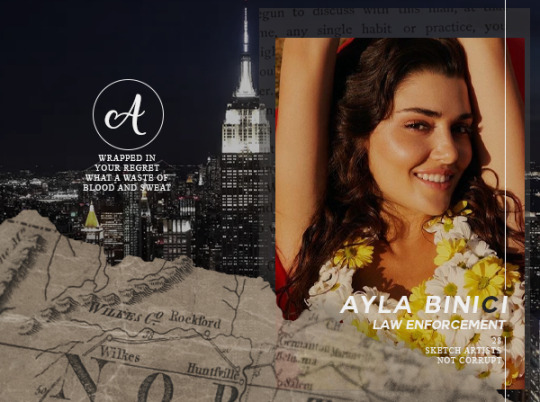
— BASICS
Name: Ayla Binici Age / D.O.B.: 28, December 1st, 1994 Gender, Pronouns & Sexuality: Cis female, she/her, bisexual Hometown: Jersey City, New Jersey Affiliation: Law enforcement Job position: Sketch artist Education: Bachelor's of Art History and Studio Art at NYU Relationship status: Single Children: A furbaby named Clio Positive traits: Cheerful, warm, reliable, charming, gentle Negative traits: Naive, impulsive, disorganized, softhearted, indecisive
— BIOGRAPHY
From the moment she was born, Ayla arrived with a smile. She always brought an infectious smile wherever she went, and brought a warmth that reached everyone in the room. Lively, optimistic, and always able to seize each moment, Ayla looked at life as one grand adventure. From a young age she was fascinated by art. She was found doodling or coloring or painting growing up. Her arts and crafts covered the fridge in her Jersey City family home. While her older siblings fell into roles that her parents pushed for, living up to the expectations placed on them by immigrant parents, Ayla faced less pressure as the baby of the family.
Growing up across the water from New York City, the city had become a second home to her. Memories of family trips to the city, of celebrating Eid al-Fitr, of trips to art museums, shows in Radio City Music Hall, dining, shopping, and much more were staples of her upbringing. So when it came time to choose a place for college, Ayla found herself wanting to fully commit to the city. She applied all over, but in the end chose the art program at NYU. Art had always been her passion and while she had dreams of supporting herself fully with her passion, Ayla knew she needed a degree to try and help her if she had to take another path. She graduated with a double degree in studio art along with art history. While creating had always been her passion, history had always captured her imagination.
New York City felt like home to her, it was vibrant, full of life, and despite the realities of the dirty and crowded city, she could still feel the hum coursing through the city of every person just looking for more. So, she decided to stay after college. Ayla had tried her hand at breaking into the art world. And while she did have some mild success at local galleries and even sold a few pieces, it was not nearly enough to support her in the expensive city. She knew she had to take a second path, to work a more conventional job to pay her bills. The city was so expensive, from rent to food to even just surviving. Sadly, the realities of the world won out over her dreams. But, Ayla wouldn't give up. On the side she'd keep trying to be able to support herself with her passion.
With her experience with art history, she had originally thought to work at one of the museums in the city. New York City was a hub to art and culture, and there were jobs out there pertaining to art history. But one friend of hers connected her to the New York Police Department. Never in her life had Ayla imagined herself to work for the police force. She was a free spirt, she was a pacifist, she hadn't really thought to promote the law enforcement before. But the pay was better than she could find in a museum. Logic won out for this decision, if she could work just one job at the police department as a sketch artist she could focus her free time on her art, on gallery shows and on promoting and selling her work. In the end she took the job, telling herself it was only temporary and either she'd find another job or would be able to support herself with her art.
Her job at the New York Police Department proved to be not as involved as she had feared. She didn't have to enforce or investigate, only bring to life the sketches of the perpetrators of crimes reported by others. Ayla, who always had worn her heart on her sleeve and supported others, discovered that she could offer support to others in her role. Some who came to her were shaken, they were scared and upset. And for just a moment she could offer warmth and support, assurance that things would get better and comfort when all else failed. She's aware of the crime in the city in a more general sense. While she knows that gangs exist in the city, she doesn't know many details. Certain neighborhoods have certain gang activity, some expand over a larger territory. But since her job deals with people coming in reporting almost every kind of crime, Ayla has never been fully exposed or focused on organized crime and gangs like others in the department. For the most part, she's unaware of the powers that be ruling over and fighting over the city. Her life is removed and it's only a matter of time before the bubble of safety is popped.
— WANTED CONNECTIONS / PLOTS
Coworkers
Roommate
Others in the art world
Exes
People to bring her into the gang world
Protectors
Enemies
2 notes
·
View notes
Photo
"But this is why one should be Christian, because one is Pagan."
— Nina Power | X (2023)
“’Tis the season to think about religion. The highly commercialized holidays blanket the cultural landscape in America from mid-November to New Year’s Day. Believers and nonbelievers alike are assaulted from every direction by Christmas carols and relentlessly cheerful Yuletide decorations. […] Leftism, from the French Revolution to this day, has never managed to woo the working class away from religion. On the contrary, religion is most powerful among the poor and dispossessed, to whom it gives a philosophical system and cosmic view, vast, consoling, and beautiful. If, as Karl Marx claimed, religion is “the opium of the people,” keeping them in a docile state of passive acceptance of their suffering, it is also the visionary drug of artists, spurring them to brilliant and enduring achievements in pictures, words, and music. […] Right now it’s that old-time religion, not liberal activism, that has won the people’s hearts.”
— Camille Paglia, That Old-Time Religion (1995)
“The pagan world admired power and glory; the weak counted for little or nothing. Christianity transvalued pagan values. A human being broken on a cross became a sign of God’s love of the powerless and a guarantee of their salvation. […] Beginning with Augustine, Christian thinkers transformed eschatological expectations of an end-time into a theology in which time and eternity co-exist. Yet Christianity never renounced the hope that the downtrodden of the world would be raised to salvation in heaven. Pagan religion and philosophy offered no such hope. Wisdom lay in accepting the world.”
— John N. Gray, The New Leviathans (2023)
"Holidays mark time. They occupy a space outside of ordinary events and give shape and meaning to our everyday existence. They also remind us of the passage of time as we reflect on Christmases, Passovers, or Ramadans past. Throughout human history, nations and peoples have marked their calendars with special days to celebrate, commemorate, and memorialize. We set aside times to reflect on the past and future, to rest and renew physically and spiritually, and to simply have fun. In English we call these extraordinary moments “holidays,” a contraction of the term “holy day.” Sometimes holidays are truly holy days—the Sabbath, Easter, or Eid al-Fitr, for example—but they can also be nonreligious occasions that serve political purposes, address the social needs of communities and individuals, or focus on regional customs and games."
— Infobase Publishing, Holidays & Celebrations

This year, Christians are invited to join this beloved annual Pagan festival.
(We won’t tell your god.)
4K notes
·
View notes
Text

— BASICS
Name: Ayla Binici Age / D.O.B.: 30, December 1st, 1994 Gender, Pronouns & Sexuality: Cis woman, she/her, bisexual Hometown: Irvine, California Siblings: Emir Binici, open middle sister Affiliation: Clean Civilian Job position: Sketch artist at the LAPD Education: Bachelor's of Art History and Studio Art at the Art Institute of Chicago Relationship status: Single Children: A furbaby named Clio Positive traits: Cheerful, warm, reliable, charming, gentle, optimistic Negative traits: Naive, impulsive, disorganized, softhearted, indecisive
— BIOGRAPHY
From the moment she was born, Ayla arrived with a smile. She always brought an infectious smile wherever she went, and brought a warmth that reached everyone in the room. Lively, optimistic, and always able to seize each moment, Ayla looked at life as one grand adventure. From a young age she was fascinated by art. She was found doodling or coloring or painting growing up. Her arts and crafts covered the fridge in her Irvine family home. While her older siblings fell into roles that her parents pushed for, living up to the expectations placed on them by immigrant parents, Ayla faced less pressure as the baby of the family.
Growing up within an hour from Los Angeles, the city had become a second home to her. Memories of family trips to the city, of celebrating Eid al-Fitr, of trips to art museums, trips to Disney Land, dining, shopping, and much more were staples of her upbringing. So when it came time to choose a place for college, Ayla found herself drawn to the city while wanting to explore more. She applied all over, but in the end chose the art program at the Art Institute of Chicago. Art had always been her passion and while she had dreams of supporting herself fully with her passion, Ayla knew she needed a degree to try and help her if she had to take another path. She graduated with a double degree in studio art along with art history. While creating had always been her passion, history had always captured her imagination.
Los Angeles had always felt like home to her, it was vibrant, full of life, and despite the realities of the dirty and crowded city, she could still feel the hum coursing through the city of every person just looking for more. So, she decided to go back after college. Ayla had tried her hand at breaking into the art world. And while she did have some mild success at local galleries and even sold a few pieces, it was not nearly enough to support her in the expensive city. She knew she had to take a second path, to work a more conventional job to pay her bills. The city was so expensive, from rent to food to even just surviving. Sadly, the realities of the world won out over her dreams. But, Ayla wouldn't give up. On the side she'd keep trying to be able to support herself with her passion.
With her experience with art history, she had originally thought to work at one of the museums in the city. Los Angeles was a hub to art and culture, and there were jobs out there pertaining to art history. She did get a job out of college at the Los Angeles County Museum of Art, but the pay was not enough and she ended up having to work a second job as a waitress just to make her bills. But one friend of hers connected her to the Los Angeles Police Department. Never in her life had Ayla imagined herself to work for the police force. She was a free spirt, she was a pacifist, she hadn't really thought to promote the law enforcement before. But the pay was better than she could find in a museum. Logic won out for this decision, if she could work just one job at the police department as a sketch artist she could focus her free time on her art, on gallery shows and on promoting and selling her work. In the end she took the job, telling herself it was only temporary and either she'd find another job or would be able to support herself with her art.
A few years ago in 2021, her father died suddenly from a heart attack. Ayla tried to be there for her mother and her siblings as much as she could. Grief gripped all of them and Ayla was hit hard by the loss of a parent before she was even thirty. None of them had expected it or been prepared to lose him so suddenly. It effected her in more ways than she could ever talk to anyone about, and Ayla tried to be there for her family. Her father had always been a traditional man having spent most of his life in Turkey before immigrating to the United States shortly before marrying her mom. But he had been good to her, her position as baby had offered her a softer side of her father.
Her job at the Los Angeles Police Department proved to be not as involved as she had feared. She didn't have to enforce or investigate, only bring to life the sketches of the perpetrators of crimes reported by others. Ayla, who always had worn her heart on her sleeve and supported others, discovered that she could offer support to others in her role. Some who came to her were shaken, they were scared and upset. And for just a moment she could offer warmth and support, assurance that things would get better and comfort when all else failed. She's aware of the crime in the city in a more general sense. While she knows that gangs exist in the city, she doesn't know many details. Certain neighborhoods have certain gang activity, some expand over a larger territory. But since her job deals with people coming in reporting almost every kind of crime, Ayla has never been fully exposed or focused on organized crime and gangs like others in the department. For the most part, she's unaware of the powers that be ruling over and fighting over the city. Her life is removed and it's only a matter of time before the bubble of safety is popped.
— WANTED CONNECTIONS / PLOTS
Coworkers
Roommate
Others in the art world
Exes
People to bring her into the gang world
Protectors
Enemies
1 note
·
View note
Text
Islamic Studies for Kids: Building a Strong Foundation for Future Generations
Islamic education is an essential aspect of a child's upbringing, helping them develop a strong connection to their faith and providing a solid foundation for moral and spiritual growth. Islamic Studies for kids introduces them to the fundamental teachings of Islam, including the Quran, the life of Prophet Muhammad (PBUH), Islamic values, and ethical principles. By starting early, children can grow up understanding the core teachings of Islam and applying them in their daily lives.
Why is Islamic Studies Important for Kids?
Islamic Studies is a crucial part of a child's education as it helps in the following ways:
Developing a Strong Faith Foundation Islamic Studies teaches children about the essential beliefs of Islam, including the five pillars, the oneness of God (Tawhid), and the importance of prayer (Salah). By learning about the core tenets of their faith, children develop a sense of identity and a deeper understanding of Islam.
Building Good Character One of the key objectives of Islamic education is to instill moral values. Through Islamic stories, teachings, and Hadith (sayings of Prophet Muhammad), children learn about kindness, honesty, respect for others, and empathy. These lessons help nurture a well-rounded character that reflects Islamic principles.
Strengthening the Connection to the Quran The Quran is the cornerstone of Islamic belief and practice. Islamic Studies for kids often focuses on teaching children how to read, understand, and memorize Quranic verses. By learning about the Quran, children gain a deeper connection to the divine message and begin to appreciate its wisdom and guidance.
Understanding the Life of Prophet Muhammad (PBUH) Learning about the life of Prophet Muhammad (PBUH) helps children understand his exemplary character, his role as the final messenger of Islam, and his teachings. Stories from the life of the Prophet serve as important moral lessons that children can apply in their own lives.
Key Components of Islamic Studies for Kids
Quranic Education Islamic Studies for kids often includes lessons on reading the Quran, understanding basic Arabic, and learning the meaning of selected verses. Many Islamic schools and online platforms offer courses that focus on Quranic memorization (Hifz) and recitation (Tajweed). These lessons help children build a strong connection with the Quran and encourage them to make it a part of their daily routine.
Prophet Stories and Islamic History Stories from the lives of the Prophets, especially Prophet Muhammad (PBUH), provide valuable lessons in character building. Children learn about the virtues of patience, kindness, and perseverance, as well as the importance of faith during challenging times. Islamic history also covers important events, such as the migration to Medina (Hijrah) and the battles fought by the Prophet and his companions.
Islamic Etiquette and Values Islamic Studies teaches children the proper etiquette in various aspects of life, including how to greet others (with “As-Salaam-Alaikum”), how to behave at the table, and the importance of respecting elders. Children are also taught about the importance of gratitude, honesty, fairness, and the role of charity in Islam.
Islamic Holidays and Traditions Islamic Studies introduces children to important Islamic holidays, such as Ramadan, Eid al-Fitr, and Eid al-Adha. Children learn the significance of fasting, giving charity (Zakat), and the importance of celebrating these occasions with family and community.
Ways to Make Islamic Studies Engaging for Kids
Interactive Learning Making Islamic Studies fun and interactive is key to engaging children. Using storytelling, visuals, and multimedia resources can capture their attention and help them retain the lessons. Educational games, quizzes, and activities that involve drawing, coloring, and puzzles can also reinforce learning in a playful way.
Incorporating Technology With the rise of online learning, many Islamic educational platforms now offer courses and resources tailored for kids. Online videos, interactive apps, and virtual classes allow children to learn Islamic Studies at their own pace while making the experience more dynamic and engaging.
Family Involvement Parents play a vital role in their child's Islamic education. Encouraging family discussions about Islamic teachings, watching religious videos together, and engaging in charitable activities as a family can enhance the learning process and allow children to internalize the lessons more effectively.
Conclusion
Islamic Studies for kids is an important component of their overall education, helping them develop a strong foundation in their faith and ethical values. By learning about the Quran, the life of the Prophet Muhammad (PBUH), and Islamic morals, children can grow up to be compassionate, responsible, and spiritually grounded individuals. With a variety of engaging and interactive resources available today, parents and educators can ensure that children receive a well-rounded education that nurtures their religious, moral, and intellectual growth.
0 notes
Text
The Importance of Islamic Classes for Kids
As parents and guardians, one of the most important things we can do is nurture a child's understanding of faith from a young age. Islamic classes for kids provide an excellent opportunity for children to learn about their faith, understand its values, and develop a deep connection to their Islamic identity. These classes are designed to make learning about Islam fun, interactive, and meaningful, ensuring that children grow up with a strong foundation in their religious beliefs.
Why Islamic Education Matters for Kids
Islamic education helps children understand the teachings of the Quran and the life of the Prophet Muhammad (PBUH). It is a vital part of a child's upbringing as it not only strengthens their faith but also shapes their character. By learning about the core principles of Islam, children are taught how to live ethically and with kindness towards others. This foundation in Islamic teachings supports them as they grow into responsible, compassionate individuals.
Islamic classes for kids provide essential guidance on basic prayers, fasting, charity, and other important practices. These lessons help children develop spiritual discipline and a sense of responsibility towards their community and the world around them.
Fun and Engaging Ways to Learn
When it comes to Islamic classes for kids, it's important that the lessons are engaging and enjoyable. Children have a natural curiosity, and it's crucial to keep them motivated and excited to learn. Many Islamic education programs for kids use creative teaching methods, such as storytelling, interactive games, art, and songs. This approach helps kids connect with Islamic concepts in a way that resonates with their interests.
For example, Islamic classes might include activities like creating prayer rugs or drawing scenes from the life of the Prophet Muhammad (PBUH). These activities make the learning process enjoyable, while also reinforcing important lessons about Islam.
Key Components of Islamic Classes for Kids
Islamic classes for children generally cover several key areas:
Basic Prayers (Salah): Learning how to perform the five daily prayers is one of the first things children learn in Islamic classes. Teachers often break down the steps of Salah into simple, easy-to-understand lessons, ensuring that kids grasp the significance of each movement and phrase.
The Quran: The Quran is the holy book of Islam, and learning to read and understand it is a major focus. In these classes, children may begin by learning how to recite short chapters and verses. Over time, they progress to understanding the meanings of these verses and their relevance in daily life.
Islamic Stories: Stories from the Quran and the Hadith (sayings and actions of the Prophet Muhammad) are shared to help children understand important values like honesty, kindness, and respect. These stories not only teach moral lessons but also help children develop a connection with the history of Islam.
Islamic Values: A big part of Islamic classes for kids is teaching the core values of Islam, such as compassion, honesty, humility, and respect. These values are emphasized in various lessons and activities, allowing children to understand how to apply them in their daily lives.
Celebrating Islamic Holidays: Islamic classes also prepare kids for important religious holidays, such as Eid al-Fitr and Eid al-Adha. Teachers use these occasions to teach kids about the significance of the holidays and how to celebrate them in a way that honors their faith.
Choosing the Right Islamic Classes
When looking for Islamic classes for children, it is essential to choose a program that is age-appropriate, engaging, and taught by knowledgeable instructors. Parents should consider the following factors:
Qualified Teachers: Teachers should have a strong understanding of Islamic teachings and be able to present them in a way that is relatable and engaging for children. They should also be patient, kind, and able to create a welcoming environment where kids feel comfortable learning.
Curriculum: A good curriculum will cover essential aspects of Islamic education, including prayers, the Quran, Islamic values, and holidays. The material should be presented in a manner that is accessible and interesting to children.
Class Size: Smaller class sizes can allow for more personalized attention and interaction. This ensures that each child gets the support they need to learn and grow.
Learning Environment: The environment should be positive, respectful, and inclusive. Children should feel safe and encouraged to ask questions and engage with their peers and teachers.
Benefits of Islamic Classes for Kids
Enrolling children in Islamic classes provides many long-term benefits. Some of these include:
Strong Faith Foundation: Children who receive an Islamic education develop a deeper understanding of their faith and build a strong spiritual connection to Allah.
Good Morals and Character: Learning about the values of Islam encourages children to embody positive characteristics, such as respect, compassion, and honesty.
Sense of Community: Islamic classes foster a sense of belonging and community. Children form friendships with others who share their faith, and they can learn from one another in a supportive environment.
Cultural Awareness: By learning about the history of Islam and its practices, children gain a greater appreciation for their cultural heritage.
Positive Impact on Society: As children grow into young adults, the values and teachings learned in Islamic classes will help them contribute positively to their communities and the wider world.
Conclusion
Islamic classes for kids are an essential part of nurturing the next generation of Muslims. They provide children with the knowledge, skills, and values they need to lead fulfilling lives grounded in their faith. By making these classes enjoyable and interactive, children can grow up with a deep connection to Islam and the tools to navigate the world with integrity, compassion, and a sense of responsibility.
0 notes
Text
how to plan a trip to cairo egypt ?
Cairo, Egypt's bustling capital, is a captivating destination with its rich history, iconic landmarks, and vibrant culture. Choosing the best time to visit can greatly enhance your experience. Cairo’s climate is predominantly hot and dry, but seasonal variations make some months more favorable for travel than others. Here's a detailed guide to help you decide when to plan your trip to Cairo.
Best Time to Visit: October to April
to know
how to plan a trip to cairo egypt ?
The ideal time to visit Cairo is during the cooler months from October to April. This period offers pleasant weather, making it perfect for sightseeing, exploring markets, and enjoying outdoor activities.
Seasonal Overview
1. Winter (December to February)
Weather: Winter is Cairo's coolest season, with daytime temperatures ranging from 14°C to 22°C (57°F to 72°F) and chilly evenings.
Advantages:
Comfortable weather for outdoor activities like exploring the Pyramids of Giza, Khan El Khalili Bazaar, and the Egyptian Museum.
Minimal humidity and clear skies create perfect photography conditions.
Considerations:
This is Cairo's peak tourist season, so expect higher prices for accommodations and crowded attractions.
Book tickets and hotels well in advance to secure availability.
2. Spring (March to April)
Weather: Temperatures rise slightly, ranging from 20°C to 30°C (68°F to 86°F), with occasional warm breezes.
Advantages:
Fewer tourists compared to winter, providing a more relaxed experience.
Ideal for visiting gardens like Al-Azhar Park and enjoying Nile River cruises.
Considerations:
Sandstorms (known as khamsin winds) can occur in late spring, so keep weather updates in mind.
3. Summer (May to September)
Weather: Summers in Cairo are scorching, with daytime temperatures often exceeding 35°C (95°F) and occasionally reaching 40°C (104°F).
Advantages:
Lesser crowds mean more flexibility for budget-friendly accommodations and tours.
Considerations:
Outdoor sightseeing can be challenging due to the intense heat.
Most activities should be planned early in the morning or late in the evening.
Indoor attractions like museums and mosques are better suited for midday visits.
4. Autumn (October to November)
Weather: Temperatures cool down to a comfortable range of 20°C to 28°C (68°F to 82°F).
Advantages:
A great balance of pleasant weather and manageable tourist crowds.
Perfect for exploring historical landmarks and enjoying leisurely strolls through Cairo's neighborhoods.
Considerations:
Light layers are recommended for daytime, with a jacket for cooler evenings.
Key Events and Festivals
Timing your trip to coincide with local events can make your visit even more memorable.
Ramadan (Dates Vary): During the holy month of Ramadan, Cairo takes on a special charm with festive lights, delicious food markets, and late-night gatherings. However, many businesses operate on reduced hours, so plan accordingly.
Eid al-Fitr and Eid al-Adha: These are joyous celebrations marking the end of Ramadan and the Festival of Sacrifice, offering a glimpse into Egyptian culture and traditions.
Cairo International Film Festival (November): A prestigious event showcasing international and regional cinema.
Monthly Breakdown of Weather and Tips
MonthAverage Temp (°C)Travel TipsJanuary14–22Ideal for all outdoor activities and sightseeing.February15–23Enjoyable weather; book early to avoid peak crowds.March18–26Great for gardens and Nile cruises.April20–30Pleasant but watch for sandstorms.May25–35Hot; prioritize morning activities.June27–37Limit outdoor exposure; focus on indoor attractions.July28–38Stay hydrated and avoid midday sun.August28–38Similar to July; look for deals on accommodations.September25–35Cooler evenings; autumn activities begin.October22–30Perfect for cultural and historical tours.November18–26Great balance of weather and crowd levels.December14–22Peak tourist season with festive atmosphere.
When to Go Based on Travel Style
History Enthusiasts: Visit in winter or autumn for comfortable exploration of ancient sites.
Budget Travelers: Summer months offer significant discounts on accommodations and tours.
Cultural Explorers: Time your trip with Ramadan or festivals for unique cultural experiences.
In summary, the best time to visit Cairo depends on your preferences and travel goals. For most travelers, the cooler months from October to April provide the best weather and opportunities for exploring the city’s iconic landmarks and cultural treasures. Regardless of when you visit, Cairo’s timeless allure is sure to leave you enchanted.
0 notes